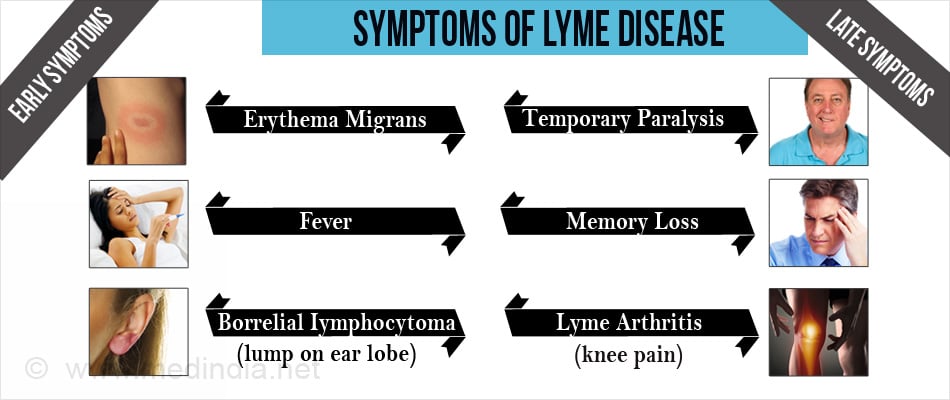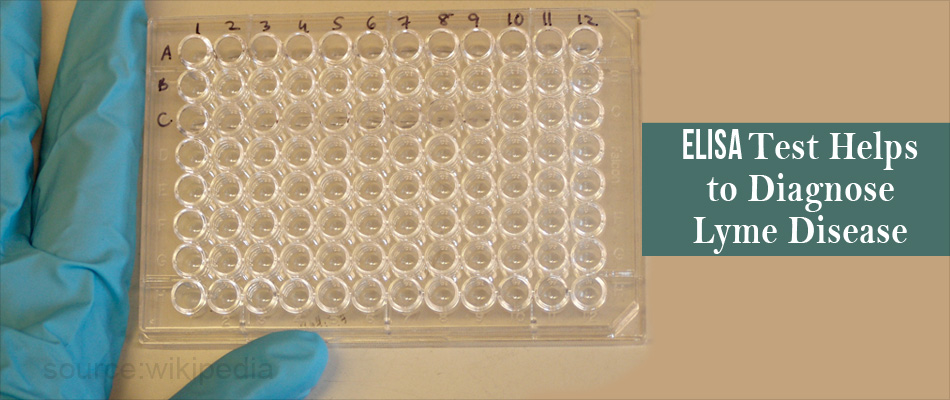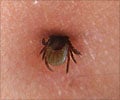- Michael T. Melia, M.D., and Paul G. Auwaerter, M.D. Time for a Different Approach to Lyme Disease and Long-Term Symptoms. N Engl J Med 2016; 374:1277-1278.
- Gary P. Wormser, Raymond J. Dattwyler, Eugene D. Shapiro, John J. Halperin, Allen C. Steere, Mark S. Klempner, Peter J. Krause, Johan S. Bakken, Franc Strle, Gerold Stanek, Linda Bockenstedt, Durland Fish, J. Stephen Dumler, and Robert B. Nadelman. The Clinical Assessment, Treatment, and Prevention of Lyme Disease, Human Granulocytic Anaplasmosis, and Babesiosis: Clinical Practice Guidelines by the Infectious Diseases Society of America. Clin Infect Dis. (2006) 43 (9): 1089-1134.
- Allen C. Steere, Jenifer Coburn, and Lisa Glickstein. The emergence of Lyme disease. J. Clin. Invest. 113:1093-1101 (2004).
- J E Herrington, Jr, G L Campbell, R E Bailey, M L Cartter, M Adams, E L Frazier, T A Damrow, and K F Gensheimer. Predisposing factors for individuals' Lyme disease prevention practices: Connecticut, Maine, and Montana. Am J Public Health. 1997 December; 87(12): 2035-2038.
- Lyme Disease Tests - (https://labtestsonline.org/understanding/analytes/lyme/tab/test)
- Know About lyme Disease - (https://www.cdc.gov/lyme/index.html)
- Information About Lyme Disease - (https://medlineplus.gov/lymedisease.html)
- Lyme disease - (https://en.wikipedia.org/wiki/lyme_disease)
What is Lyme Disease?
Lyme disease is a tick-borne infection caused by the bacterium Borrelia burgdorferi. The disease is characterized by a bull's eye - shaped skin rash and flu-like symptoms such as fever, chills, body aches, weakness and swollen joints.
Deer ticks, which feed on human and animal blood, are likely to harbor the disease-causing bacteria and spread it when feeding.

People who live in or near the woods or those who spend more time near grassy areas are likely to get Lyme disease. These people need to take the basic precautions in order to prevent catching the disease.
Symptoms of Lyme disease were originally mistaken for juvenile rheumatoid arthritis. It was considered a separate condition for the first time only in the year 1975 in a town called Old Lyme in Connecticut. The bacterium that caused the disease was described by Willy Burgdorfer in 1981.
Physical examination and a laboratory test will help diagnose Lyme disease, which can be completely treated by administering antibiotics at an early stage. However, some individuals may suffer from long-lasting symptoms. If left untreated, this disease can affect the heart, nervous system and the joints and give rise to long standing complications.
Lyme Disease Statistics
- Lyme disease mostly affects the temperate regions of the Northern hemisphere.
- The Center for Disease Control and Prevention (CDC) receives an underestimated number of 30,000 new cases of Lyme disease every year in the United States.
- This number could be as high as 300,000 cases per year according to 2 studies conducted by the CDC to understand the total burden of illness.
- Ninety six percent of all reported cases are confined to 14 states belonging to the Northeast and upper Midwest regions of the United States.
- Prevalence of Lyme disease is comparable among males and females, is highest among 10 to 19 year olds and is seven times more common among Asians.
- Even after adequate treatment, 10 to 20% of affected individuals develop joint pains, memory loss and tiredness for at least six months.
- In order for the bacteria to spread in the body, the tick must be attached for 36 to 48 hours.
How is Lyme Disease Caused?
Lyme disease is brought about by the bacterium, Borrelia burgdorferi. Ticks are the vectors, which carry these disease-causing bacteria. They are brown in color and are the size of the head of a pin.
Ticks usually acquire the Borrelia bacterium from small mammals and sometimes birds.
In northeastern, mid-Atlantic and north-central United States the predominant vector is the blacklegged tick or the deer tick.
When the deer ticks feed on human blood they transmit the disease from one infected person to a healthy one. A tick that has fed on blood would grow several times in size. Tick bites are usually found in hard-to-see areas like the groin, armpits and scalp. In areas where the disease is rampant, around 50% of the deer ticks are infected.
Infections occur mostly when the bite is caused by immature ticks called nymphs since they are difficult to see. When adult ticks bite they can be discovered within the stipulated time taken to transmit the bacteria and removed.
Nymph ticks are present usually in spring and early summer and adult ticks are found in the cooler months.
The Borrelia burgdorferi are made up of 21 closely related species of which only three cause Lyme disease. B. burgdorferi sensu stricto is mostly found in North America and B. afzelii and B. garinii are mostly found in Europe.
What are the Symptoms and Signs of Lyme Disease?
Early Symptoms and Signs: These can be due to localized infections or those that have disseminated within days to weeks of the onset of infection
- A localized, red, painless circular outwardly expanding rash resembling a bull’s eye called erythema migrans (EM) that may develop from 3 to 32 days from the day of the tick bite.
- Flu-like symptoms of fever, headaches, chill, weakness and muscle pain.
- EM in other areas of the body within days to weeks as the bacterium has spread through the bloodstream.
- A purplish lump either on the ear lobe, nipple or scrotum called borrelial lymphocytoma found only in affected individuals in Europe.
- Loss of muscle tone on one or both sides of the face.
- Stiff neck.
- Inflammation of the brain.
- Memory loss and sleep disturbances.
- Swelling in the knees and other bigger joints.
- Meningitis accompanied with severe headaches.
Late Dissemination Symptoms and Signs: If left untreated, the disease can lead to complications due to spreading throughout the body.
- Subtle cognitive difficulties, insomnia and changes in personality
- Shooting pains, numbness and tingling in the hands and feet
- Lyme arthritis that affects mostly the knees but can also affect the ankles, elbows, writs, hips and shoulders’ with symptoms such as severe pain and swelling of the particular joints
- Temporary paralysis
- Chronic inflammation of the brain with memory loss, problems in concentrating and mood changes
- Rare symptoms include irregular heartbeat, hepatitis, eye inflammation and continuous fatigue.

Chronic Lyme disease which is also called Post-Treatment Lyme Disease Syndrome (PTLDS) also has symptoms characteristic of late dissemination. After undergoing an antibiotic treatment for 2-4 weeks, a third of the patients continue to feel severe fatigue, pain, joint and muscle aches, sleep disturbances and cognitive difficulties for about 6 months. This condition is severe only in 2% of the cases even after 6 months.
It is also called chronic Lyme disease if the disease is left untreated and has disseminated to the late-stage of the disease.
What are the Risk Factors for Lyme Disease?
The risk factors for Lyme disease include-
- Living or spending time in the woods
- Spending time in grasslands
- Living in mice-infested areas, as mice are the prime reservoirs of Lyme disease bacteria
- Exposing skin in high-risk areas
How Do You Diagnose Lyme Disease?
Lyme disease is often an over-diagnosed disease because its symptoms often resemble those of other diseases. Besides, the symptoms are not common for all the affected individuals.
Medical history and a physical examination are the first steps to diagnose Lyme disease. Any signs and symptoms of the disease and possible exposure to blacklegged ticks will help diagnose the disease correctly.
Laboratory tests, that detect the presence of certain antibodies (IgM and IgG) to the bacteria, help to confirm the disease especially if there is no active erythema migrans or EM when physically examining the patient.
The CDC recommends a two-tier step for detection. First the sensitive enzyme-linked immunosorbent assay (ELISA) is performed. If it turns out positive, then the specific Western Blot is done to confirm diagnosis.

What is the Treatment for Lyme Disease?
Oral administration of antibiotics for 1 to 4 weeks is the gold standard for Lyme disease treatment.
Doxycycline is the antibiotic given for localized infection for most patients except for children less than 8 years old or pregnant or breastfeeding women.
Some of the alternate drugs include amoxicillin,azithromycin and cefuroxime axetil.
In case the disease has progressed or disseminated, with possible heart problems, arthritis or neurological symptoms treatment with antibiotics may be carried out intravenously. This is effective in treating the infection, although the symptoms may persist for a while. First choice of intravenous treatment is the antibiotic ceftriaxone. Alternatives are cefotaxime and doxycycline. This mode of treatment may cause certain side effects, such as, gallstones, diarrhea and low WBC count.
How Do You Prevent Lyme Disease?
Prevention, they say, is better than cure. Following some simple steps would help to easily prevent Lyme disease.
- Sensible use of insect repellent with approximately 30% DEET (N,N-Diethyl-meta-toluamide) is effective in preventing Lyme disease.
- There are natural products like eucalyptus that may also be used.
- Wear appropriate clothing while in the woods or high risk areas.
- Make your habitat tick proof.
- If a tick sits on your skin, remove the tick using a pair of tweezers. Once a tick is disposed, apply antiseptic to the affected area.










